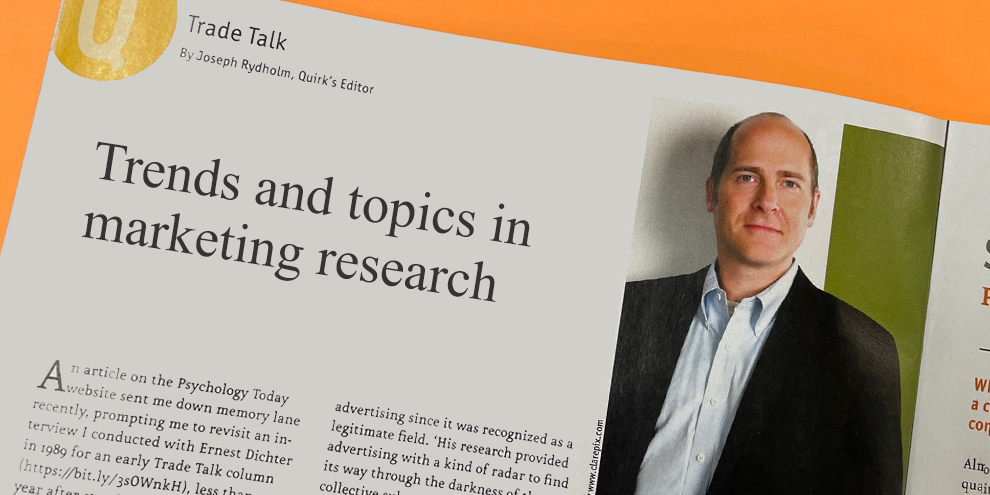A great irony of the marketing research industry is that it’s one of the most under-researched industries I know of. True, there are a host of ongoing studies of the business end of the biz, fielded by the likes of the AMA, the MRA, ESOMAR and other industry bodies, but there hasn’t been a lot of work done to look at the corporate side of the equation.
That’s one of the reasons we have been conducting our annual survey of marketing research salaries since 2009 (for both client-side and vendor-side researchers) and why we debuted our corporate researcher study last year.
Our aim with these various studies is to give corporate researchers a way to compare and measure themselves in relation to their peers. What are researchers struggling with? What are their pain points? How do they stack up against other insights professionals?
We publish the results of our studies in the magazine and in our e-newsletter (and house them in our searchable online article database) but we thought it might be worthwhile to compile them all into one comprehensive report. And thus was born what we have dubbed, with great creativity, the Corporate Research Report.
We’ll have printed copies of the report with us at the various conferences and events we attend this year but you can also download a (free) copy at www.quirks.com/corporateresearchreport or access it through the same Apple and Android apps you use to read the e-version of the magazine.
The three-part report compiles data from our ongoing subscriber study of research methods in use and the aforementioned studies of the corporate researcher’s work life and salary and compensation.
Research methods: Each year, new and existing Quirk’s subscribers are asked about their roles in the research industry (i.e., job title); their involvement in different industries (i.e., consumer, non-durable; consumer, durable; services; business-to-business; and health care); and which research products and services they purchase – from full-service research, syndicated studies and personal interviewing to panels, focus group moderating and statistical analysis.
Work life: To develop the material for the work life section, our questions focused on the makeup and workings of their departments; their pain points and challenges; how they assess their own performance and how others assess theirs; their preferred ways of staying up to date on the industry and its methods; and their views on the value and staying power of newer research methods.
Salary and compensation: The 2013 edition of the annual salary survey of client-side researchers yielded the largest respondent pool yet, with a total of 1,290 full-time client-side researcher participants – and arguably the most optimistic data set so far. We debuted the salary study at the height of the Great Recession, so it’s been interesting to follow how both salaries and outlooks have evolved along with the state of the national and global economy. While the research industry went through bouts of dissatisfaction in the workplace (2011, specifically) and rashes of wanting to change jobs (again, 2011), client-side researchers have largely toughed it out and now seem the better for it, as the 2013 data shows the highest level of job satisfaction to date, at 75 percent (19 percent somewhat satisfied; 37 percent satisfied; 19 percent very satisfied).
Ways to improve
If you check out the Corporate Research Report and you find there are topics you’d like us to address, please let me know. We sought the input of corporate researchers in developing the questionnaire but we are always looking for ways to improve and make more relevant the material we produce. If you’re curious about something, chances are so are your research peers and colleagues, so don’t hesitate to contact me at joe@quirks.com.
